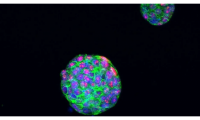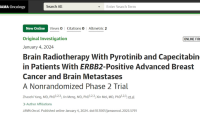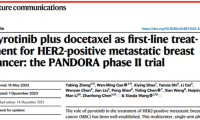-
Agile, responsive regulation helps early breast cancer patients to benefit from a study to potentially improve survival outcomes
- Source: drugdu
- 111
- April 1, 2024
-
Hengrui Pharmaceuticals’ PD-L1 Inhibitor Adebelizumab Combined with HER2 ADC SHR-A1811 Approved for Breast Cancer Clinical Treatment
- Source: drugdu
- 135
- February 29, 2024
-
Pain-Free, Low-Cost, Sensitive, Radiation-Free Device Detects Breast Cancer in Urine
- Source: drugdu
- 145
- February 22, 2024
-
Spit Test Detects Breast Cancer in Five Seconds
- Source: drugdu
- 108
- February 21, 2024
-
Innovate UK grants funds for breast cancer therapy project
- Source: https://www.pharmaceutical-technology.com/news/innovate-uk-funds-breast-cancer/?cf-view
- 105
- February 14, 2024
-
Neural Network Recognizes Breast Cancer on Histological Samples With 100% Accuracy
- Source: drugdu
- 85
- February 5, 2024
-
Hundreds of chemicals linked to breast cancer risk identified in new study
- Source: drugdu
- 212
- January 16, 2024
-
Hengrui’s Innovative Drugs Piratinib and Dalsili Breast Cancer Indications Both Recommended by 2024 CBCS Guidelines
- Source: drugdu
- 177
- January 7, 2024
-
Hengrui’s Innovative Drug Pyrotinib Combined Therapy for HER2-Positive Metastatic Breast Cancer Featured in the Sub-journal of ‘Nature’
- Source: drugdu
- 115
- December 28, 2023
your submission has already been received.
OK
Subscribe
Please enter a valid Email address!
Submit
The most relevant industry news & insight will be sent to you every two weeks.













